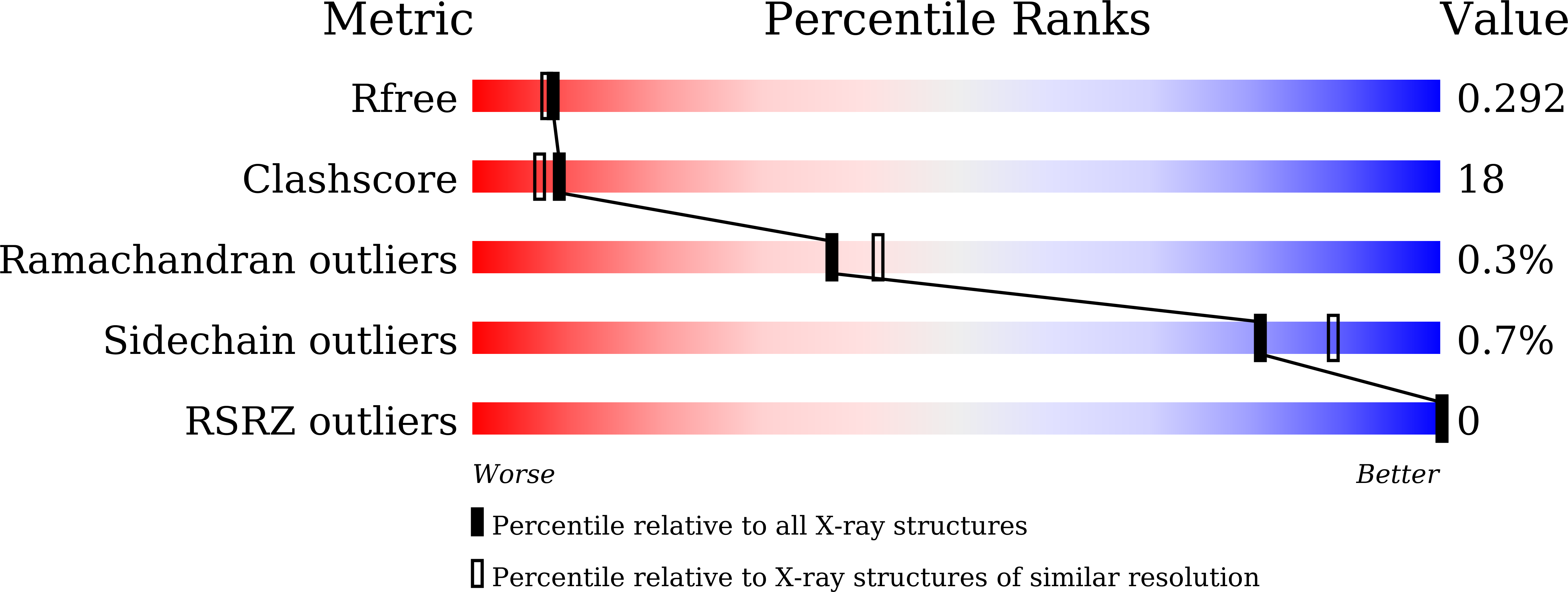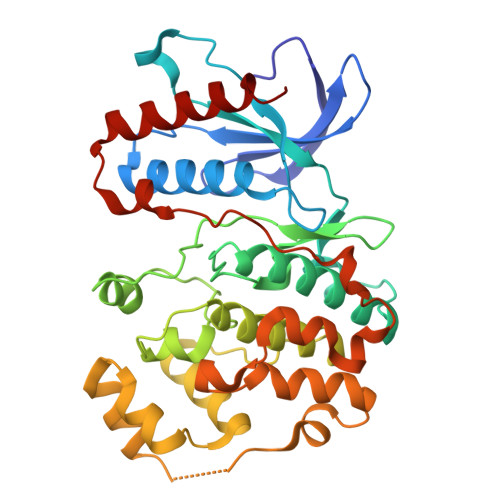A first-in-class selective inhibitor of ERK1/2 and ERK5 overcomes drug resistance with a single-molecule strategy.
Xiao, H., Wang, A., Shuai, W., Qian, Y., Wu, C., Wang, X., Yang, P., Sun, Q., Wang, G., Ouyang, L., Sun, Q.(2025) Signal Transduct Target Ther 10: 70-70
- PubMed: 39979271
- DOI: https://doi.org/10.1038/s41392-025-02169-z
- Primary Citation of Related Structures:
9LNR, 9LTA - PubMed Abstract:
Despite significant advancements in kinase-targeted therapy, the emergence of acquired drug resistance to targets such as KRAS and MEK remains a challenge. Extracellular-regulated kinase 1/2 (ERK1/2), positioned at the terminus of this pathway, is highly conserved and less susceptible to mutations, thereby garnering attention as a crucial therapeutical target. However, attempts to use monotherapies that target ERK1/2 have achieved only limited clinical success, mainly due to the issues of limited efficacy and the emergence of drug resistance. Herein, we present a proof of concept that extracellular-regulated kinase 5 (ERK5) acts as a compensatory pathway after ERK1/2 inhibition in triple-negative breast cancer (TNBC). By utilizing the principle of polypharmacology, we computationally designed SKLB-D18, a first-in-class molecule that selectively targets ERK1/2 and ERK5, with nanomolar potency and high specificity for both targets. SKLB-D18 demonstrated excellent tolerability in mice and demonstrated superior in vivo anti-tumor efficacy, not only exceeding the existing clinical ERK1/2 inhibitor BVD-523, but also the combination regimen of BVD-523 and the ERK5 inhibitor XMD8-92. Mechanistically, we showed that SKLB-D18, as an autophagy agonist, played a role in mammalian target of rapamycin (mTOR)/70 ribosomal protein S6 kinase (p70S6K) and nuclear receptor coactivator 4 (NCOA4)-mediated ferroptosis, which may mitigate multidrug resistance.
Organizational Affiliation:
State Key Laboratory of Biotherapy and Cancer Center, Innovation Center of Nursing Research, Nursing Key Laboratory of Sichuan Province, West China Hospital, and Collaborative Innovation Center of Biotherapy, Sichuan University, Chengdu, 610041, China.















